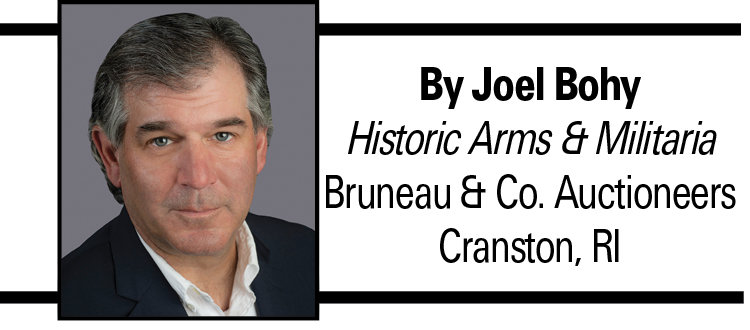The U.S. Model 1863 Double Rifle Musket made by J.P. Lindsay has to be one of the strangest muskets made during the Civil War. When a Lindsay is amongst other more common rifle muskets they don’t really stand out until you see there is no lock plate and two hammers. Once you realize what you are holding in your hands, you think how cool it is, then realize it wasn’t really a good design.
John Paul Lindsay received a patent for his double shot pistols in 1859 which were manufactured in very small numbers. Legend has it he was inspired to create the double-shot musket because his brother was killed while reloading a single shot musket in a gunfight. He patented this double shot musket in 1860. In 1861 as the Civil War broke out, many inventors were trying to come up with firearms that could fire multiple shots without the need to reload as much. As the war rolled on and casualties grew, the government ordered about 1,000 double rifles from Lindsay. Between 1863 and 1864, some of them were issued to four regiments for use in the field.
Soldiers would have to load two cartridges down the muzzle of the gun and place a percussion cap on each of the two nipples. The hammers would then be cocked and when the trigger was pulled, the right hammer would fall and set off the top cartridge, or the second one loaded. The second pull of the trigger would drop the left hammer and set off the bottom cartridge. This seemingly would give a soldier two aimed shots before having to reload, however, through negligence, the heat of battle, or malfunction, both cartridges could go off at the same time with nasty results for the gun as well as the poor soldier shooting it. There were reports of this happening, and the gun was soon dropped from service. The fact that some did blow up, along with the relatively small numbers of them built, could be the reason why these odd guns are so rare.
The above said, they are very attractive, and you can appreciate the engineering and thought behind the design. They have beautiful walnut stocks very similar in form to their single shot cousins. The stocks have government inspectors’ marks on the left flat of the stock, although there are a few survivors that do not have these markings. The butt plates, barrel bands, trigger guard, nose cap, etc. are all bright steel just like the single shot rifle muskets, as is the ramrod and blued steel rear sight. The central receiver is quite interesting with an extended tang which runs down to the comb of the butt similar to a Remington Rolling Block. The top of the receiver in front of the two hammers is marked “LINDSAY/PATENT’D. OCT. 9. 1860”.
While the Model 1863 Lindsay Double Rifle is really good looking and quite a piece of engineering, it goes to show that not every invention is a good idea to put into service.














Comments
No comments on this item Please log in to comment by clicking here